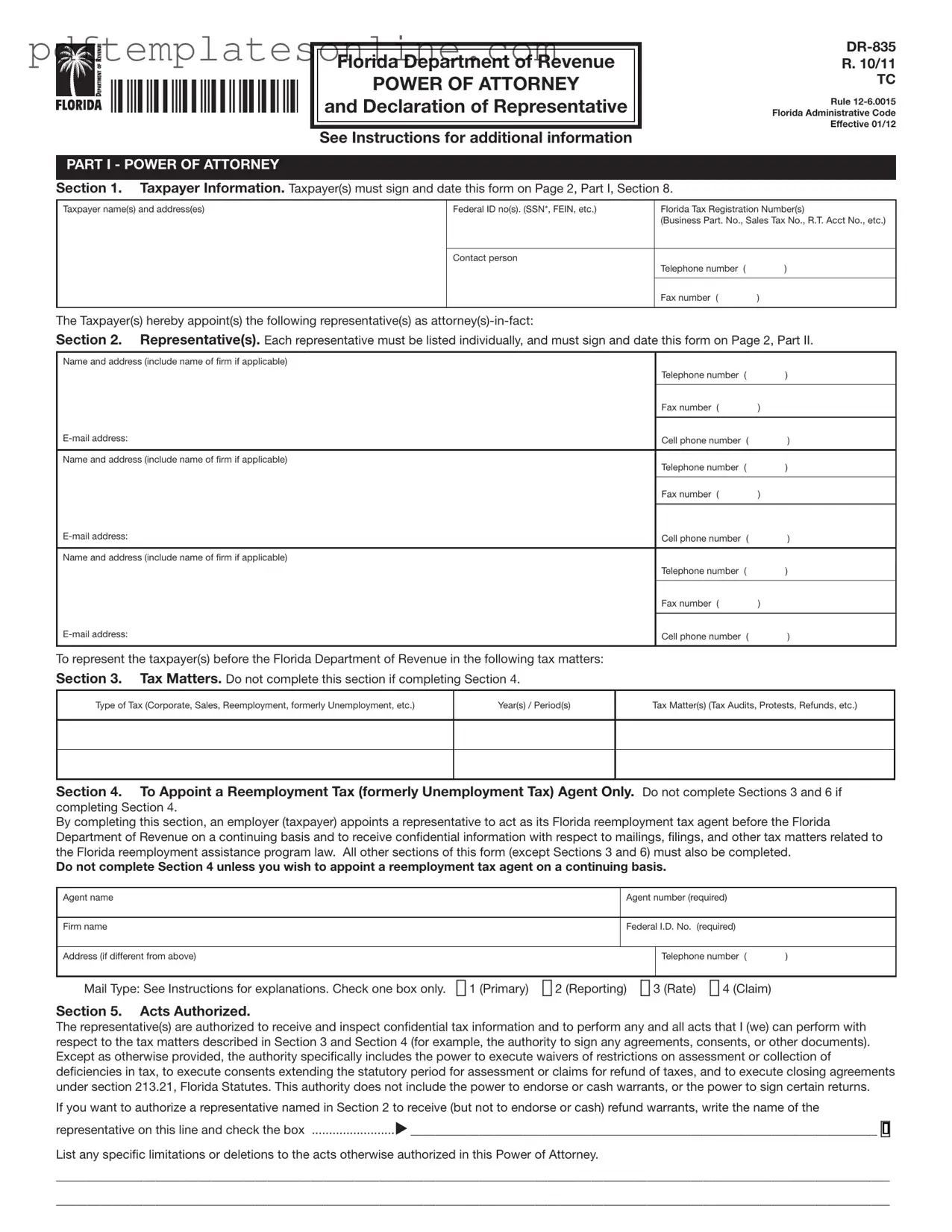Filling out the Tax Power of Attorney (POA) DR 835 form can be a straightforward process, but many individuals encounter common pitfalls that can lead to delays or complications. One prevalent mistake is failing to provide complete information. When filling out the form, it is essential to include all required details, such as the taxpayer's name, address, and Social Security number. Missing any of this information can result in the form being rejected.
Another frequent error is not signing the form correctly. The taxpayer must sign the document to authorize the representative. If the signature is missing or does not match the name provided, the IRS may not accept the form. It is also important to ensure that the representative’s information is accurate. Incorrect details about the representative can lead to issues in communication and representation.
Many people overlook the importance of checking the expiration date of the form. The Tax POA DR 835 form must be current and valid. Using an outdated version can lead to rejection, so it is advisable to download the latest form from the official IRS website. Additionally, individuals often forget to specify the tax matters for which they are granting power of attorney. Clearly defining the scope of authority is crucial to avoid confusion or limitations in representation.
Another mistake involves not understanding the limitations of the power granted. Some individuals mistakenly believe that the power of attorney allows their representative to make decisions beyond tax matters. This misunderstanding can lead to unintended consequences. Furthermore, failing to provide a clear expiration date for the power of attorney can result in prolonged authority that may not be desired.
Lastly, individuals often neglect to keep a copy of the completed form for their records. Retaining a copy is essential for future reference and can help clarify any disputes that may arise later. By being mindful of these common mistakes, taxpayers can ensure that their Tax POA DR 835 form is filled out correctly and efficiently, facilitating a smoother process in managing their tax matters.
